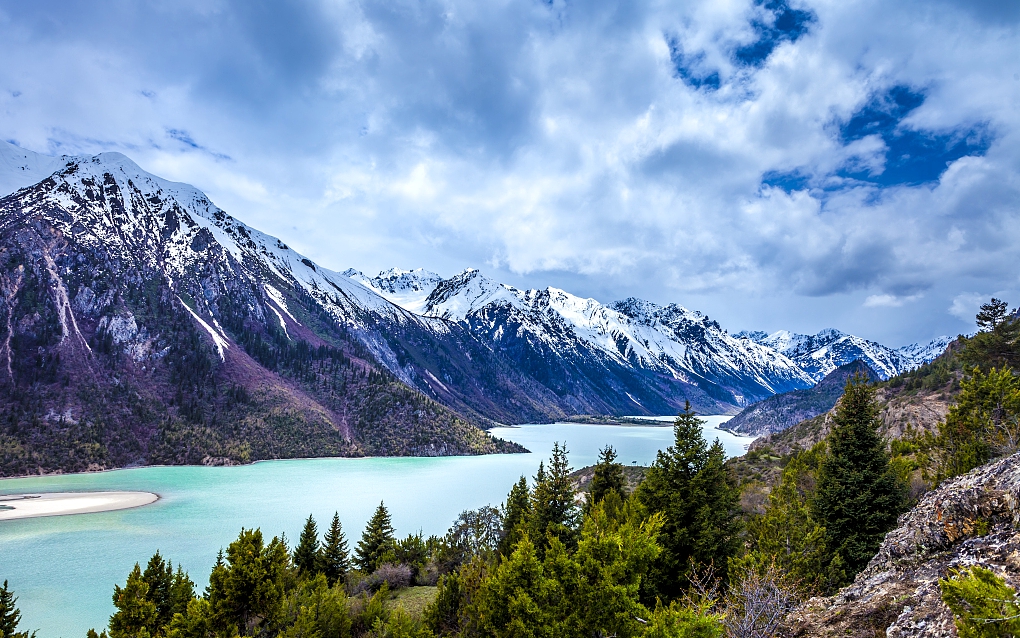Visits to China's Tibet Autonomous Region increased by 48.9 percent year on year during the May Day holiday this year, according to the Department of Tourism Development in Tibet. "The roof of the world" has become an ideal destination in the minds of many tourists, but there are also plenty of sightworthy places to see on the way to Tibet.
Sichuan Province is geographically adjacent to Tibet. The southern line of the Sichuan-Tibet Highway belongs to part of the G318 National Highway, and is a popular route into Tibet. Many visitors choose to enter Tibet through this highway as they can see "four seasons in a day" along the road.
Construction of the highway, which starts in Yaan and travels west to Lhasa, began 71 years ago. The highway is regarded as one of the most precipitous roads in China but also has breathtaking and ever-changing landscapes. Here are places you can't miss along the Sichuan-Tibet Highway.

Xinduqiao is hailed as "a paradise for photographers." /CFP
Xinduqiao is hailed as "a paradise for photographers." /CFP
Kangding, the capital of Ganzi Tibetan Autonomous Prefecture in Sichuan, is well-known for a catchy Chinese folk song called "Love Song of Kangding."
Mugecuo Scenic Area, also known as the "Scenic Spot of Kangding Love Song," is one of the must-visit places in Kangding, endowed with unique peaks and dense woods. Dubbed the "King of Sichuan Mountains," Mount Gongga is classed as the highest peak in Sichuan. Snow-covered mountains and healing hot springs coexist there harmoniously.

Mugecuo Scenic Area is located in the northeast of Kangding, Ganzi Tibetan Autonomous Prefecture, southwest China's Sichuan Province. /CFP
Mugecuo Scenic Area is located in the northeast of Kangding, Ganzi Tibetan Autonomous Prefecture, southwest China's Sichuan Province. /CFP
Xinduqiao is a small town two hours' drive from Kangding City. Hailed as "a paradise for photographers" and "a world with lights and shadow," the site has a picturesque corridor that stretches about 10 kilometers long.

Xinduqiao is located in Ganzi Tibetan Autonomous Prefecture, southwest China's Sichuan Province. /CFP
Xinduqiao is located in Ganzi Tibetan Autonomous Prefecture, southwest China's Sichuan Province. /CFP
Ranwu Lake is the largest body of water in eastern part of Tibet, located in Ranwu Town, Changdu City, on the edge of the G318 highway. Magnificent Laigu Glacier is situated along its northern shore and provides an inexhaustible water source for the lake. The snow-capped mountains and tranquil turquoise lake complement each other.

Ranwu Lake is located in Changdu City, China's Tibet Autonomous Region. /CFP
Ranwu Lake is located in Changdu City, China's Tibet Autonomous Region. /CFP
The 19th Nyingchi Peach Blossom Festival was held in March this year, attracting an increasing number of visitors from different cities to visit Nyingchi. Colorful, blooming flowers with snow-capped mountains in the background make it a photographic scenic spot, especially during the spring.

Nyingchi is located in the southeast of China's Tibet Autonomous Region. /CFP
Nyingchi is located in the southeast of China's Tibet Autonomous Region. /CFP
The tourism industry in Nyingchi has soared with the help of the local government, which makes it easier and more convenient for people to visit this beautiful spot.
About 23,800 farmers and herdsmen lifted themselves out of poverty through the tourism industry in 2020, according to Xinhua News Agency. Local people's lives have improved drastically since the liberation of Tibet 70 years ago.
(Cover image designed by Du Xinchen)

